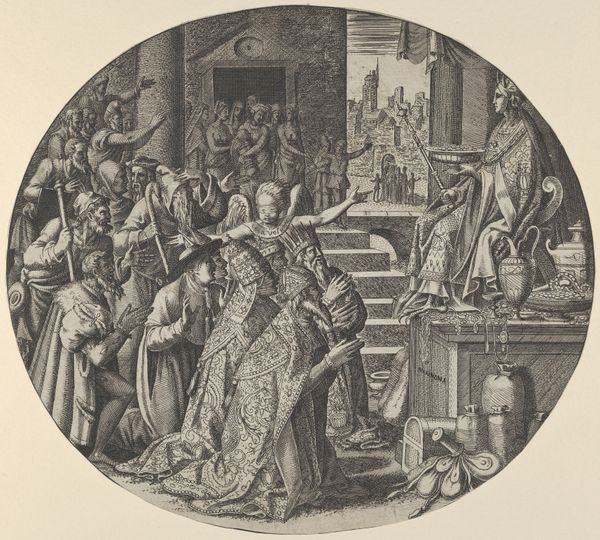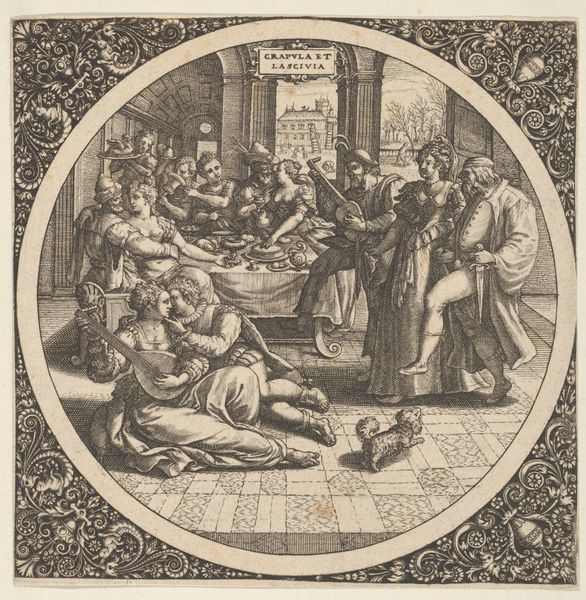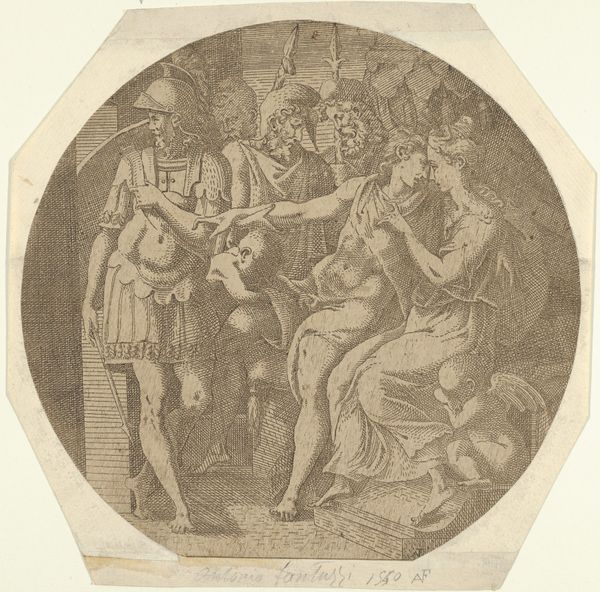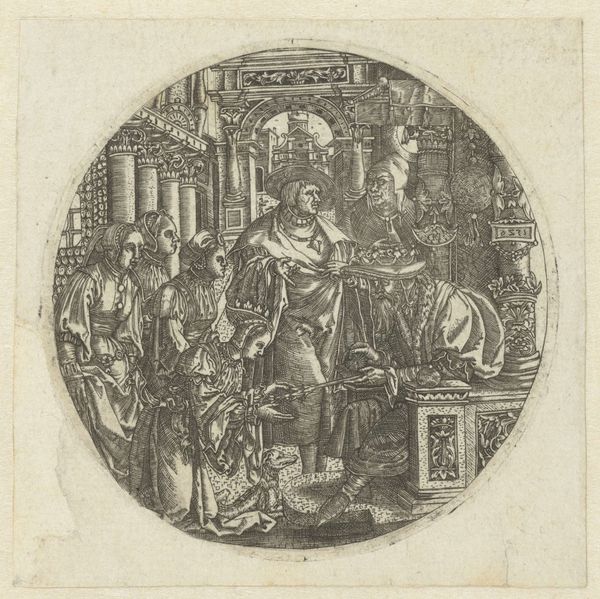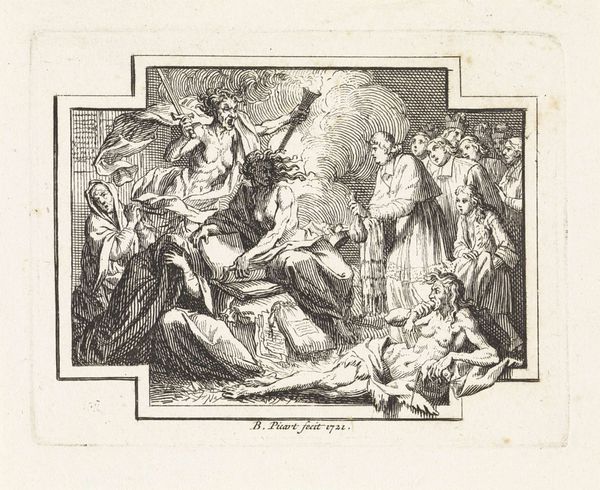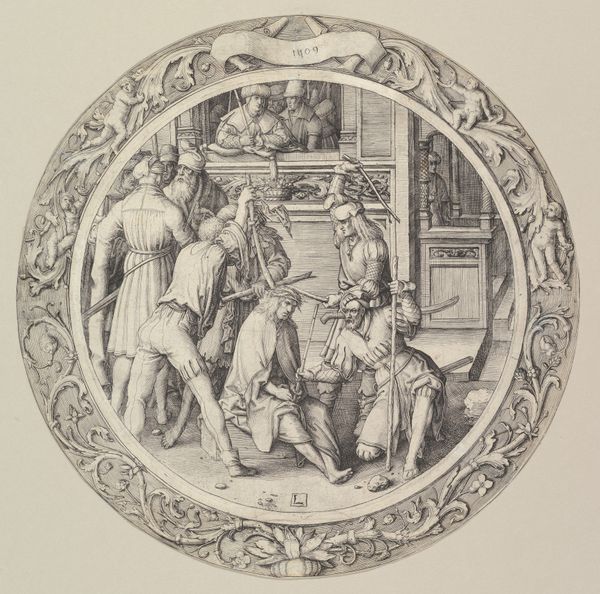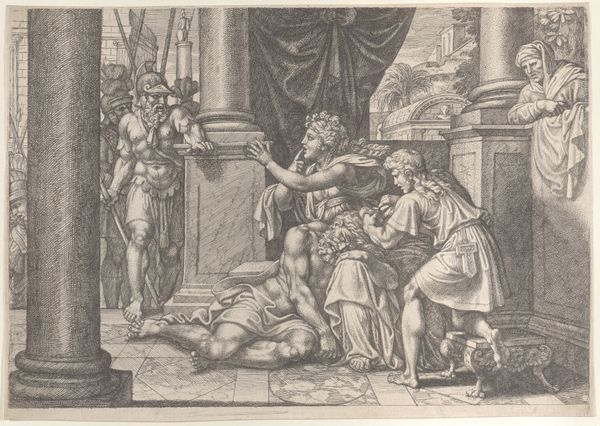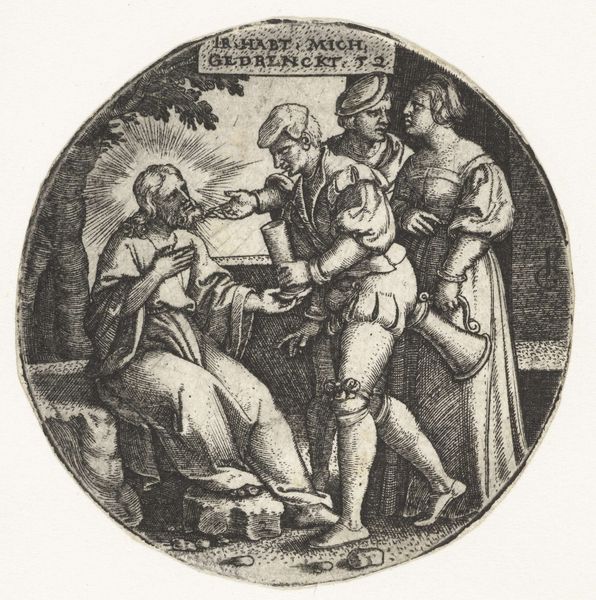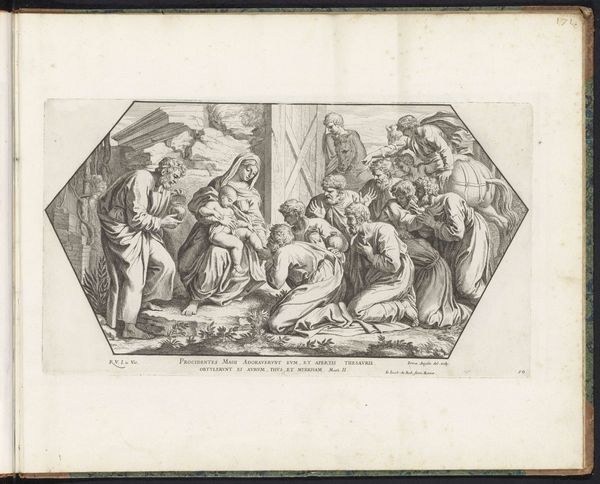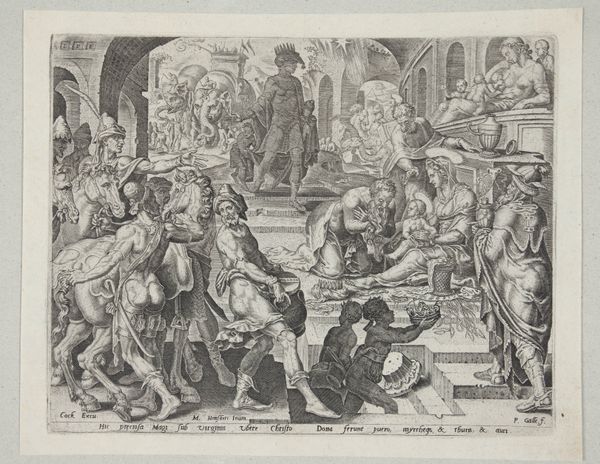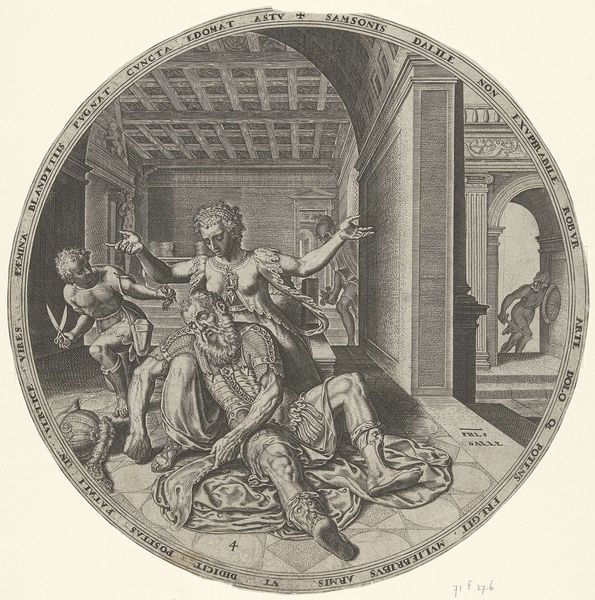
print, engraving
#
narrative-art
# print
#
mannerism
#
figuration
#
11_renaissance
#
history-painting
#
engraving
Dimensions: 260 mm (height) x 260 mm (width) (monteringsmaal), 263 mm (None) (None)
Editor: This is Philips Galle’s “Samson and Delilah,” an engraving dating from about 1558 to 1561. It's a really striking image – all these figures crammed into this circular composition, the violence… It feels very dramatic. What do you see in this piece? Curator: What immediately grabs my attention is the way it presents power dynamics and betrayal, through a gendered lens. Consider the biblical narrative itself. How does Galle visualize Delilah? Not simply as a betrayer, but someone actively taking power, commanding the scene? It's fascinating to analyze how this echoes societal anxieties about female agency at the time. Editor: I see what you mean. Delilah’s not cowering in the corner; she’s literally holding the scissors. What about Samson? He seems… pathetic, almost. Curator: Precisely! It's important to question: whose story is being told, and how? Samson's strength is taken, linking vulnerability to the masculine, while Delilah's actions, even if morally ambiguous, are acts of control. And note the presence of the soldiers. Who benefits from Samson’s downfall, and what structures of power are at play? Editor: So it’s less about a simple good-versus-evil story and more about exploring those power structures? Curator: Exactly. It invites us to analyze gender, agency, and betrayal, moving beyond a simplistic reading and considering its complex social and political context during the Renaissance. This print, then, becomes a mirror reflecting the values and anxieties of its time. Editor: That's a perspective I hadn't considered before. I usually just thought of it as a dramatic biblical scene. Curator: And that's the beauty of engaging with art, isn't it? We start with an initial impression, but the deeper we delve, the richer and more complex the narrative becomes. It's important to analyze whose stories get told, and how.
Comments
No comments
Be the first to comment and join the conversation on the ultimate creative platform.

